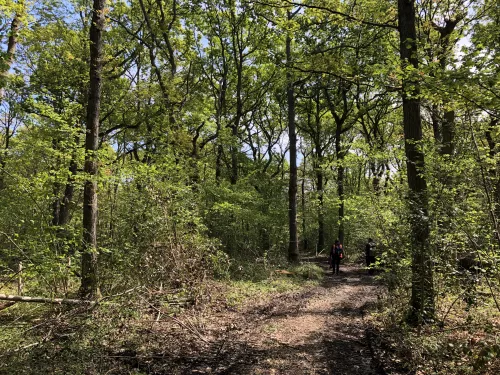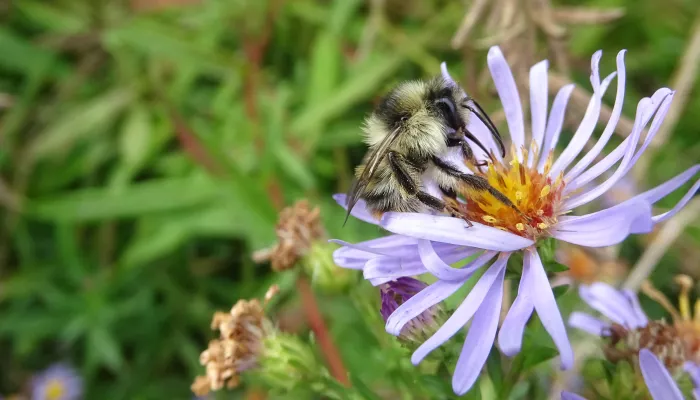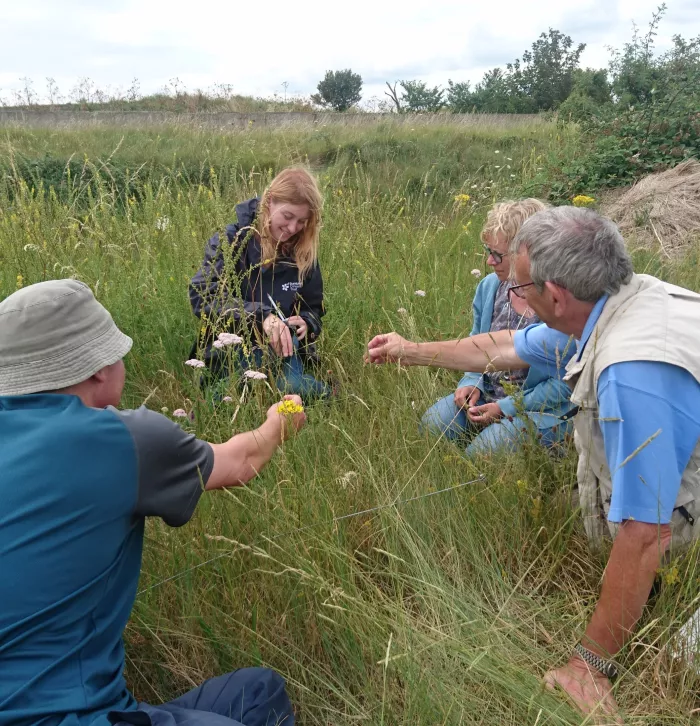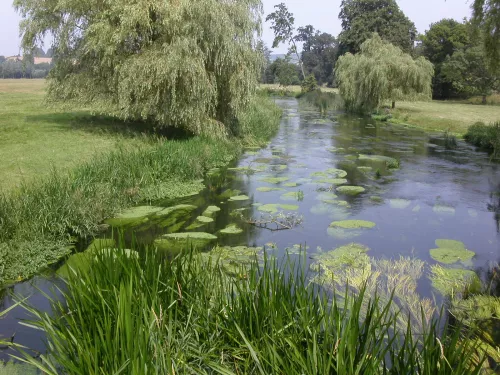
The Wilder Blean Initiative
The Wilder Blean is our vision for an iconic landscape, where wilderness can be experienced, and nature is at the heart of healthy communities with a thriving green economy.

The Bee Roads work forms part of a wider 3-year project called 'Making a Buzz for the Coast'. This is led by Bumblebee Conservation Trust in partnership with Kent Wildlife Trust and covers 135 miles of Kent's coastline from Dartford to Deal.
The Bee Roads work forms part of a wider 3-year project called 'Making a Buzz for the Coast'. This is led by Bumblebee Conservation Trust in partnership with Kent Wildlife Trust and covers 135 miles of Kent's coastline from Dartford to Deal.
Kent is a very important county for bumblebees, with 5 of the 7 rarest species of bumblebee in the UK. Most of these are now confined to coastal areas, like the shrill carder bee. This project is targeting these rare and threatened species, as well as providing benefits to other pollinating insects.
We have set up 13 new Roadside Nature Reserves, adding to our existing network. These 'Bee Roads' provide corridors, helping to connect populations of bees and other pollinators. They cover an area of 12.1 hectares across the Swale.
The Bee Roads are managed by a very enthusiastic volunteer team, with practical habitat management carried out from October to March each year. This work aims to increase the diversity of wildflowers and pollinators, with two-thirds of the site cut and one-third left uncut, providing a refuge for overwintering invertebrates and potential nesting sites for bumblebees in future years. Cuttings are collected to reduce the build-up of nutrients on site, encouraging more different plants to flourish. On some sites we have created bee banks and scrapes, which are south-facing, sunny areas of bare ground where some solitary bees and wasps like to nest.
During the spring and summer months, the Bee Road team carries out surveys to see what plant and pollinator species are using the Bee Roads. Bumblebees are monitored using Bumblebee Conservation Trust's 'BeeWalk' scheme, which is a fixed transect walked once a month. We also monitor the vegetation to see how it is responding to our management work and record the flowers available for pollinators.

We are looking for volunteers in the Swale area to help us manage and survey our Bee Roads. To find out more about our volunteer roles and how to get involved in the project, please visit our volunteer page.

The Wilder Blean is our vision for an iconic landscape, where wilderness can be experienced, and nature is at the heart of healthy communities with a thriving green economy.

The Kent and Medway Road Verge Project, established in 1994, works to identify, protect and manage road verges which contain threatened habitats or wildlife. These are marked by special signs.

Local Wildlife Sites are areas which are important for the conservation of wildlife in the administrative areas of Kent and Medway.